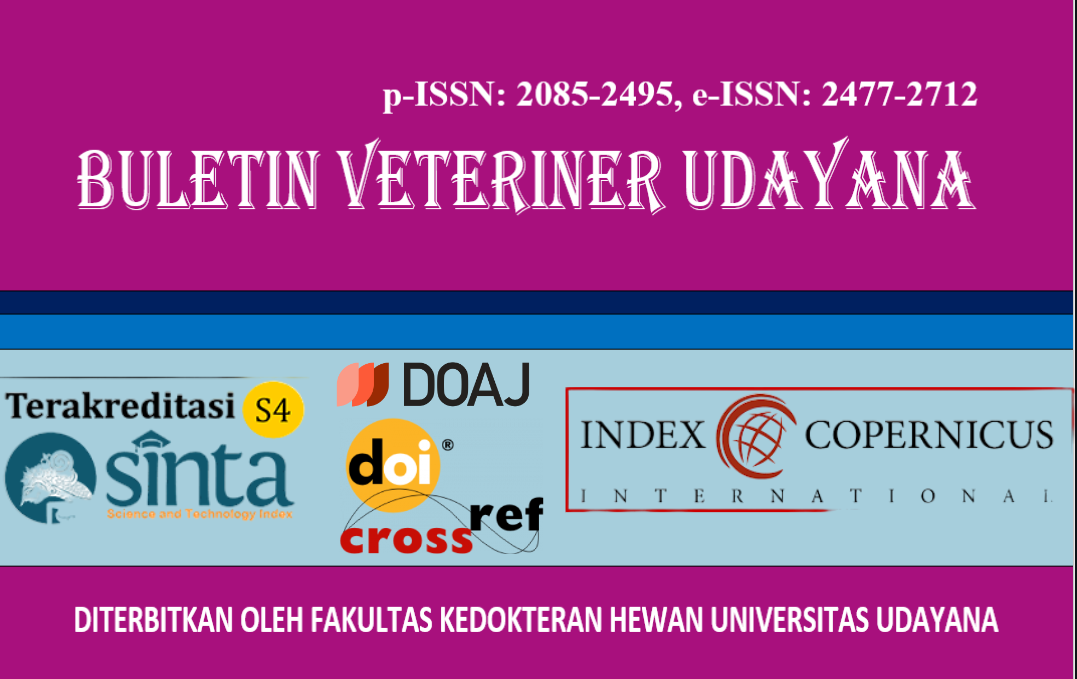THE CORRELATION BETWEEN EATING FREQUENCY AND THE INCIDENT OF DYSPEPSIA IN ADOLESCENTS
DOI:
https://doi.org/10.24843/bulvet.2024.v16.i04.p04Keywords:
Adolescents, Eating frequency, DyspepsiAbstract
The prevalence of dyspepsia in Indonesia is still very high, ranking third, with the highest number of dyspepsia sufferers reaching 40-50%, and occurs at various ages. So to this day, the incidence of dyspepsia is still one of the biggest disease problems in Indonesia. The aim of this study was to determine the relationship between eating frequency and the incidence of dyspepsia in adolescents who have a history of dyspepsia in the work area of the South Sumedang health center. This research method uses a quantitative method with a descriptive correlation design approach using Rank Spearman, namely by distributing questionnaires to get an idea of the frequency of eating and the incidence of dyspepsia based on the results of the questionnaire. The population and samples taken were 43 teenagers who had a history of dyspepsia in the work area of the South Sumedang health center. The results of the study showed that most of the frequency of eating in teenagers was poor, with 30 respondents with a percentage of (69.76%) and the results of the incidence of dyspepsia showed that teenagers who had a history of dyspepsia were mostly in the severe dyspepsia category, 30 respondents with a percentage of ( 69.76%). The results of research in the work area of the South Sumedang Community Health Center are that most teenagers have a poor eating frequency which results in dyspepsia incidents, therefore it is hoped that we can prevent recurrent dyspepsia incidents by maintaining eating frequency.




